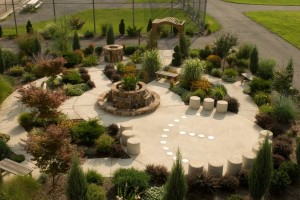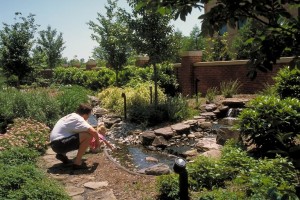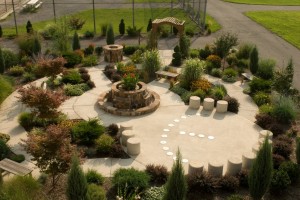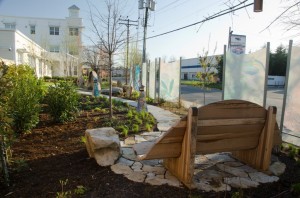For about a month now we have published journal entries found at TKF Foundation’s Sacred Places. Published every Friday, these #BenchStories share some of the thoughts, feelings and experiences of visitors as they stop for a moment to soak in the surroundings. For the most part, these journal entries have been fairly straightforward–a visitor watching the snow fall in Mt. Washington Arboretum, another comparing their own growth and transformation to the change of the seasons. For the most part, the Bench Stories so far have been fairly straight forward. They stand on their own without needing to know specific details about the location where they were written.
Tomorrow’s Bench Story is a bit different (and yes, you will have to wait until Friday to read it). While the message is universal, when you consider the context in which it was written, the words take on a much more complex meaning. You see, tomorrow’s Bench Story was written by a prisoner at the Western Correctional Institution in Cumberland, MD.
 The Meditation Garden at the Western Correctional Institution is one of many Open Spaces Sacred Places that have been designed to serve a population that might not normally get to experience the tranquility of a quite moment in nature. Other Sacred Places hope to bring the healing forces of nature to locations where they might be needed most.
The Meditation Garden at the Western Correctional Institution is one of many Open Spaces Sacred Places that have been designed to serve a population that might not normally get to experience the tranquility of a quite moment in nature. Other Sacred Places hope to bring the healing forces of nature to locations where they might be needed most.
With that in mind, we wanted to share some of the TKF Foundation Open Spaces Sacred Places that either serve a specific population or are in locations where nearby nature was not readily available to the local community.
Meditation Garden at the Western Correctional institution
The Meditation Garden at the Western Correctional Institution is one among a very few meditation gardens located within a prison in the United States. Although contained in a larger space surrounded by razor wire, the meditation garden gives prisoners a place for solitude in an environment where they are rarely away from the company of others. The garden provides a place where prisoners can be alone to sort through a family crisis such as the death of a family member, reflect, or just let down their guard for a moment in a place filled with nature.
Tended to by members of the prison’s horticulture program, the garden also helps develop skills that the prisoner can use in their life after prison.
Lighthouse Homeless Prevention Center Homeless Prevention Center
Located in Anne Arundel County Maryland, Lighthouse Ministries serves more than 1,500 disadvantaged and homeless people per year. Many of these individuals have experienced the harsher side of nature that can come with living outdoors. The Healing Garden at Lighthouse Homeless Prevention Center provides a place to reintroduce Lighthouse clients to the healing and humanizing effects of nature.
Public Art is an important part of this Sacred Space. As such, Lighthouse has formed a partnership with Art Walk and the Providence Art Center which serves disabled adults. The partnership brings together groups which have not worked together in the past and populations that are often overlooked in the larger community.
Hospital Sacred Spaces
Over the years, TKF Foundation has helped to create a number of Open Spaces Sacred Places in hospitals and other health care facilities. Many of these spaces provide a quiet place for patients, family members and staff to take a moment away from the stress of the hospital environment. Some provide a healing window view for patients while others provide a place of solace, peace and restoration while coping with the illness or loss of a loved one. These Sacred Spaces truly embrace the healing powers of nature.
 Some of these Sacred Spaces include (click on the link for more information):
Some of these Sacred Spaces include (click on the link for more information):
- Baltimore Washington Medical Center
- Anne Arundel County Medical Center
- Franklin Square Hospital Center
- John Hopkins Bayview Medical Center
- A Nature Place (Current National Award, research project)
Although this is just a small sampling of the many TKF Foundation Open Spaces Sacred Places, you can see the diversity of the many populations these green spaces serve and the environments where they are located. More than just a public parklet, all Open Spaces Sacred Places are specifically designed to best serve the needs of the nearby population and community.


